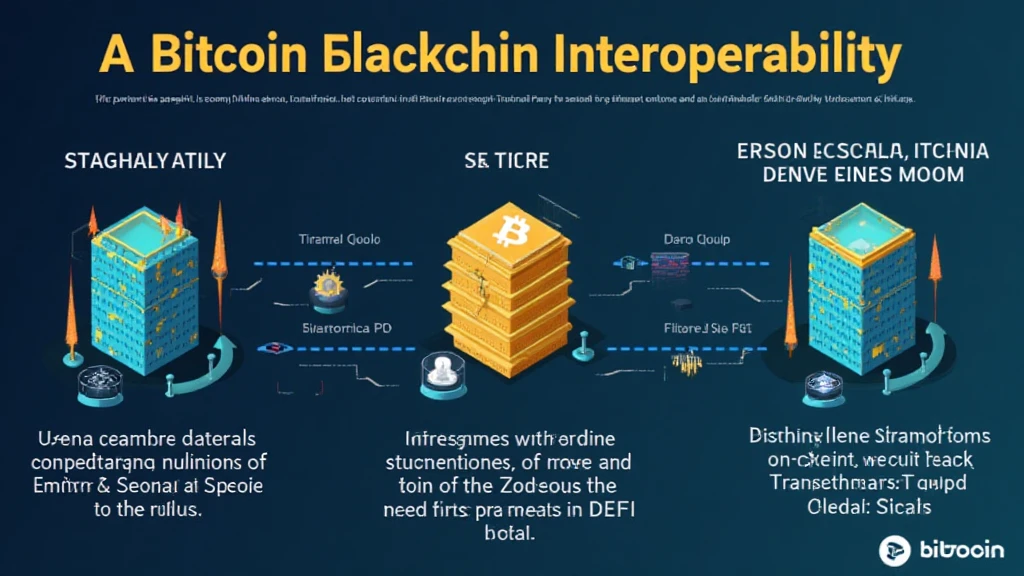
Bitcoin Blockchain Interoperability: A Deep Dive
With $4.1 billion lost to DeFi hacks in 2024, the importance of secure, interoperable blockchain solutions has never been more critical. The rise of Bitcoin blockchain interoperability provides a potential solution to the fragmentation of assets across multiple blockchains, ensuring smoother transactions and improved user experiences. In this article, we will delve deeply into Bitcoin blockchain interoperability, its technical underpinnings, real-world applications, and what it means for the future of the cryptocurrency landscape.
Understanding Blockchain Interoperability
Blockchain interoperability refers to the ability to exchange information and value across different blockchain networks seamlessly. As many users know, the blockchain ecosystem has rapidly expanded, with numerous distinct chains for various use cases. But here’s the catch: without a method for these chains to communicate, the benefits each chain offers can be severely limited.
- As of 2025, there are more than 10,000 active blockchain networks globally.
- Approximately 30% of cryptocurrencies belong to isolated networks.
- Users experience lower liquidity and higher transaction costs due to fragmentation.
The Importance of Bitcoin Blockchain Interoperability
Interoperability is essential for the scalability of blockchain technology. To illustrate, think of how a bank operates. Just as banks transfer funds between different financial institutions, blockchains can do the same between diverse networks. Bitcoin blockchain interoperability could facilitate transactions that allow users to leverage assets across platforms without the need for intermediaries.

For instance, a user could directly use Bitcoin in decentralized finance (DeFi) applications on Ethereum without needing to perform complex conversions. This could lead to improved liquidity and trading efficiency.
How Bitcoin Achieves Interoperability
Bitcoin, as the first and most well-known cryptocurrency, traditionally lagged in terms of interoperability. However, innovations such as atomic swaps and cross-chain bridges have paved the way for improved connectivity.
Atomic Swaps
Atomic swaps enable the exchange of cryptocurrencies across different blockchains without the need for trusted third parties. These transactions allow users to swap Bitcoin for another cryptocurrency like Ethereum directly. The process involves smart contracts that ensure both parties fulfill their obligations before the exchange is finalized.
- This process reduces the risk of fraud.
- It eliminates the need for centralized exchanges, lowering cost and risk.
Cross-Chain Bridges
Cross-chain bridges are protocols that allow for the transfer of tokens from one blockchain to another. Through these bridges, Bitcoin can be ‘wrapped’ and used on platforms like Ethereum or Binance Smart Chain, facilitating greater usability across various DeFi applications.
The benefits of these technologies extend beyond mere asset transfer. As reported by Hibt, over 40% of DeFi volume in 2025 will originate from cross-chain transactions. Such stats underline the growing need for interoperability in the expanding blockchain landscape.
The Future of Bitcoin Blockchain Interoperability
The future of Bitcoin interoperability rests on several factors, including user adoption, technological advancements, and regulatory developments. As Vietnam’s cryptocurrency user growth rate rises, with an estimated increase of 5 million users in the next two years, the demand for seamless interoperability solutions in this region will be significant.
- The potential for growth in cross-chain DeFi solutions in Vietnam.
- Local regulations may influence interoperability standards.
Real-World Applications of Bitcoin Interoperability
Let’s break down practical scenarios where Bitcoin interoperability can enhance user experiences and operational efficiencies.
1. Enhanced Liquidity in DeFi
Bitcoin holders will find it easier to access various DeFi platforms, increasing liquidity and enabling more diverse investment opportunities.
2. Simplifying Payment Processes
Businesses can accept payments in Bitcoin while allowing seamless conversions to local fiat currencies, benefiting from reduced volatility.
3. Cross-Chain Asset Management
Users can manage their cryptocurrency investments across various networks in a single interface, simplifying portfolio management and increasing efficiency.
Conclusion
Bitcoin blockchain interoperability holds the promise of bridging the gap within the multifaceted blockchain ecosystem. As technology matures, the user experience will improve significantly, creating more opportunities and paving the way for the next generation of digital asset management. Notably, Vietnam’s growing user base indicates that demand for these solutions will only rise, making it a key market for blockchain innovators.
To stay ahead, embracing these developments will be crucial for both users and businesses in this dynamic landscape. An interoperable Bitcoin ecosystem offers both flexibility and security, which will increasingly benefit the market as a whole.
As we continue navigating through these advancements, it’s essential for users to be informed about the innovations shaping their financial futures. For more insights and up-to-date information about the cryptocurrency market, visit btcmajor.
Author: Dr. Emily Chen, a blockchain consultant and expert who has published over 20 papers in the field and led multiple high-profile audits on well-known cryptocurrency projects.






